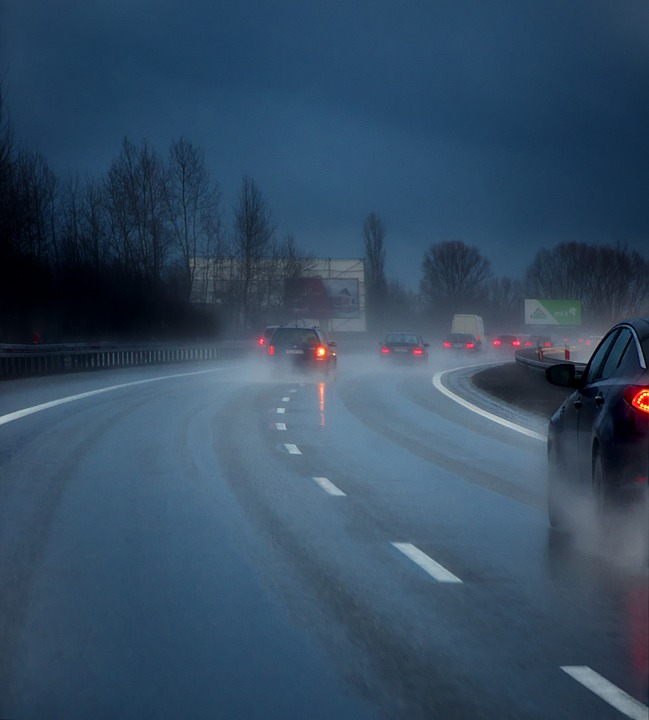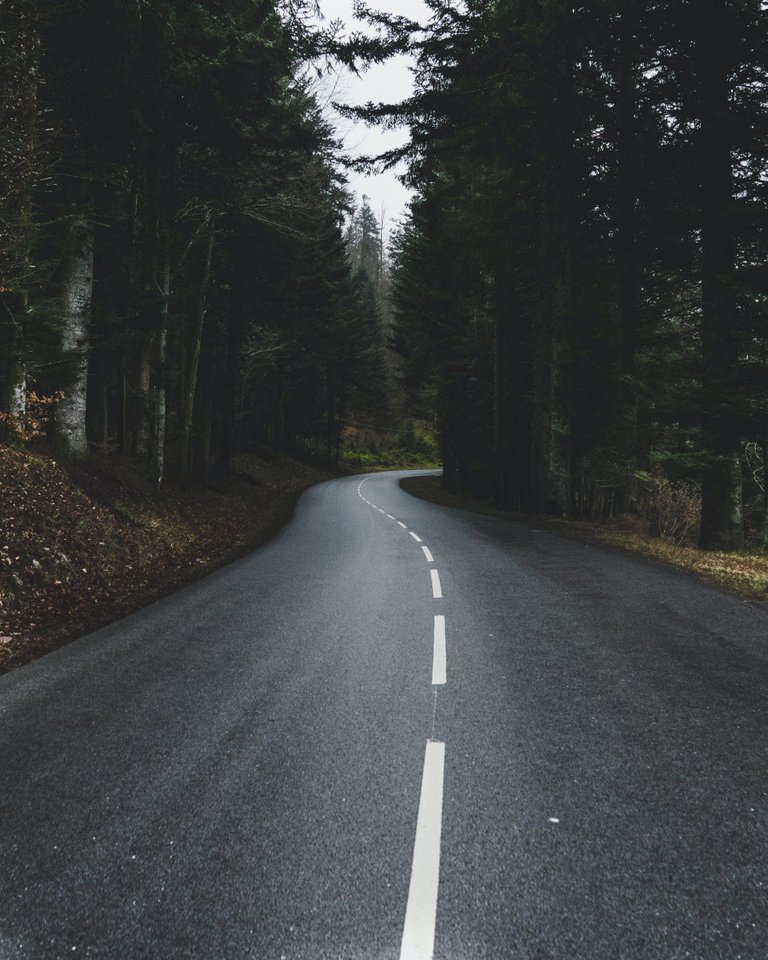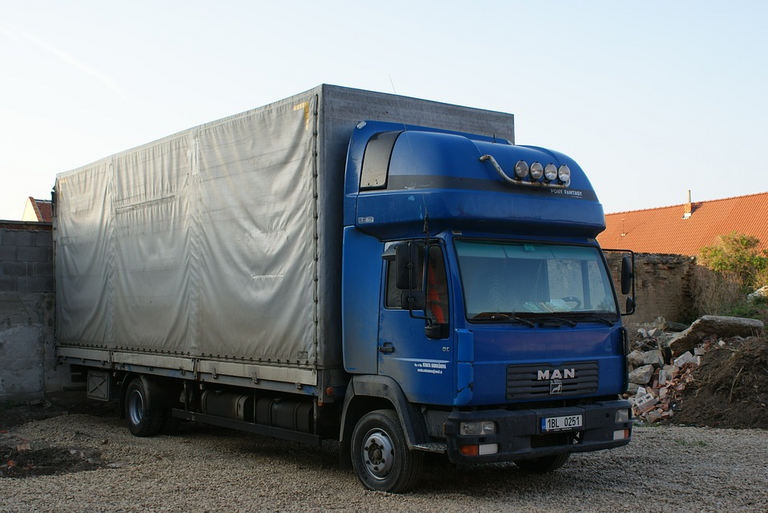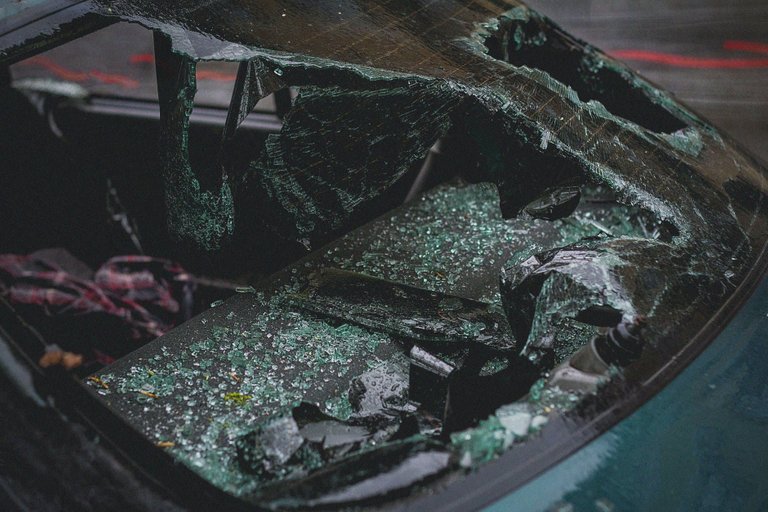[Esp-Eng] Carreteras Peligrosas// Dangerous Roads
Hoy traigo este tema a este espacio porque ha muerto como consecuencia de estas carreteras sangrientas un amigo muy cercano para mi y aún veo como pasan los años y no veo mejoras en este aspecto sino que por el contrario cada vez se hace mas riesgoso transitar el territorio venezolano por las condiciones en que se presentan sus vías terrestres
Hello Hive Community, in this opportunity I would like to share with you and at the same time make catharsis about the fact that our roads and highways have been filled with blood, either by assailants who used to be nocturnal and now are diurnal, by roads in very bad condition due to lack of maintenance or simply because people are not aware that when driving they are risking their lives and the lives of others.
Today I bring this topic to this space because a very close friend of mine has died as a consequence of these bloody roads and I still see how the years go by and I do not see any improvement in this aspect but on the contrary, it is becoming more and more risky to travel through Venezuelan territory due to the conditions of its roads.

Tenia como 25 años cuando trabajaba como caletero de un camión que transportaba comida y cosméticos, realizando su distribución por distintos lugares desde Valencia, Estado Carabobo en Venezuela. Pude conocer distintos lugares en este tiempo como la Casa Materna de Simón Díaz en Aragua, por ejemplo.
Sin embargo ese día, o mejor dicho esa madrugada, días antes de una Semana Santa, nos toco trabajar. Salimos el día anterior vía Cojees para empezar a repartir los pedidos de comida y cosméticos.
Yo trabajaba con mi tío, así que fuimos rodando kilómetro tras kilómetro. El me manifestaba y enseñaba cuales vías eran peligrosas y cuales no y en algunas me decía:
!mijo esta carretera es muy peligrosa, debes estar pendiente de todo¡
Continuamos en la carretera y agarramos una vía que denominan La Mona, por un parque safari que existía en al año 2000 y que ya tiene cerradas sus puertas. Se encuentra entre Bejuma y Valencia
Empezamos a repartir los productos, cuando llegamos a una Estación de Gasolina en el Sector Bejuma. Eran aproximadamente las 4 de la tarde y mi tío me aclara que repartiríamos allí para irnos a San Felipe, en el Estado Yaracuy, donde pasaríamos la noche en casa de familiares.
El día estaba lluvioso y aunque en ese momento no llovía el pavimento estaba mojado y justo en esa zona el transito de gandolas era muy frecuente, por ende era común ver derrames de gasolina, gasoil y aceite que hacían peligrosa la autopista, produciendo deslizamientos y vehículos volcados.
Since I was young I have driven different types of vehicles both light and heavy and I have had the experience of seeing and living many things on the roads, however I have not been able to forget a particular experience.
I was about 25 years old when I was working as a driver of a truck that transported food and cosmetics, distributing them in different places from Valencia, Carabobo State in Venezuela. I was able to visit different places during this time, such as the Simón Díaz Maternity Home in Aragua, for example.
However, that day, or rather that early morning, days before Easter, we had to work. We left the day before via Cojees to start delivering food and cosmetics orders.
I worked with my uncle, so we drove kilometer after kilometer. He would show me and show me which roads were dangerous and which were not and at some of them he would tell me:
!mijo this road is very dangerous, you should be aware of everything!
We continued on the road and took a road called La Mona, for a safari park that existed in 2000 and has already closed its doors. It is located between Bejuma and Valencia.
We started to deliver the products when we arrived at a gas station in the Bejuma sector. It was about 4 o'clock in the afternoon and my uncle told me that we would deliver there to go to San Felipe, in the State of Yaracuy, where we would spend the night at the house of relatives.
The day was rainy and although at that time it was not raining the pavement was wet and just in that area the traffic of trucks was very frequent, therefore it was common to see spills of gasoline, diesel and oil that made the highway dangerous, producing landslides and overturned vehicles.


Fuente/ Source
Emprendimos nuestro camino nuevamente, y a unos 3 kilómetros de la gasolinera, encontramos el fatídico accidente. La camioneta que antes había pasado a toda velocidad, estaba volteada.
Al igual que muchas personas, nos paramos a ayudar a la conductora que aún con vida pedía ayuda. Pudimos sacarle de la camioneta pero lo mas impresionante es que en medio de su dolor y el shock del accidente solo preguntaba por Juan, pero ella estaba sola.
Llamen a Juan, llamen a Juan no dejaba de repetir la señora, al llegar los bomberos y policías, y viendo la desesperación de aquella mujer, buscaron su celular a ver si Juan era un familiar al que debían llamar por este medio, ya que no se veía a nadie mas junto a ella y ni cerca del suceso.
En este momento, es en el que un bombero que trataba de llamar por el celular, se mueve buscando señal y observa que le cae una gota de sangre en la chaqueta, luego otra y así un hilo de sangre desde arriba. Alza su vista y la triste escena fue ver a Juan, un niño de unos 10 años clavado en el árbol donde fue a parar al salir disparado durante el accidente.
Esta imagen fue desgarradora y nunca la he olvidado.
Suddenly, as we were finishing our delivery at the gas station, we saw a truck passing by at full speed. I remember that both my uncle and I, who already knew the road and knew how dangerous it was when it was wet, looked at each other and we had nothing left to do but pray that those people, with their recklessness and speeding, would not have any consequences.
We started our way again, and about 3 kilometers from the gas station, we found the fateful accident. The pickup truck that had been speeding by earlier was overturned.
Like many people, we stopped to help the driver who was still alive and crying for help. We were able to get her out of the truck but the most impressive thing is that in the midst of her pain and the shock of the accident she was only asking for Juan, but she was alone.
Call Juan, call Juan, the lady kept repeating, when the firemen and police arrived, and seeing the desperation of that woman, they looked for her cell phone to see if Juan was a relative they should call by this means, since no one else was seen next to her and nowhere near the event.
At this moment, a firefighter who was trying to call by cell phone, moves looking for a signal and observes that a drop of blood falls on his jacket, then another and then a trickle of blood from above. He looks up and the sad scene was to see Juan, a boy of about 10 years old pinned to the tree where he was shot during the accident.
This image was heartbreaking and I have never forgotten it.

Gracias por acompañarme en esta catarsis y ayudarme a soltar el hecho de que existen vías que cobran vidas.
Today that sadness accompanies me after losing my friend, I can only think how in a second, in a wrong move while driving or in a tragic moment we lose everything, what we love or our lives.
Thank you for accompanying me in this catharsis and helping me to let go of the fact that there are roads that take lives.

El contenido es de mi autoría
El traductor empleado es Deepl.com
The content is authored by me
The translator used is Deepl.com




Mi sentido pesame, muy desgarrador tu historia y sobre todo la situacion actual con muchas carreteras carentes de remodelacion y trabajo asi como conductores imprudentes y el clima tampoco ayuda mucho dependiendo de la zona, debio ser muy desagradable y triste poder experimentar algo asi. Gracias por compartirlo aqui siempre sras bienvenido cuando gustes, saludos y cuidado en esos lares con los vehiculos.
Your content has been voted as a part of Encouragement program. Keep up the good work!
Use Ecency daily to boost your growth on platform!
Support Ecency
Vote for Proposal
Delegate HP and earn more